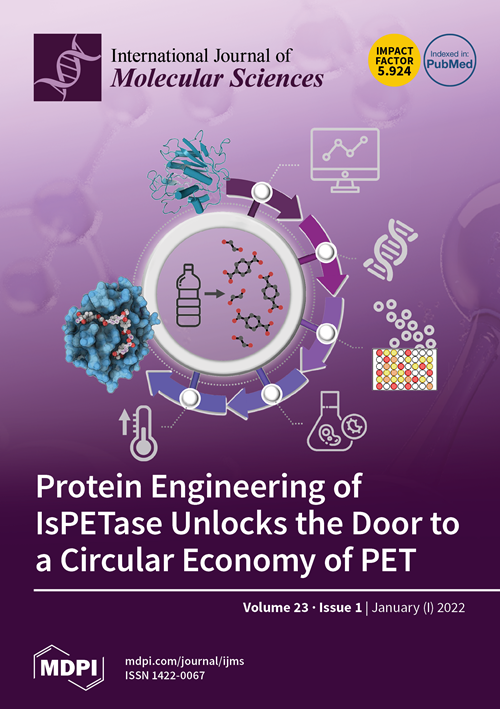叶绿体基因组比较分析为红美迪子(Medicago ruthenica)的适应性进化提供了启示
IF 4.9
2区 生物学
Q1 BIOCHEMISTRY & MOLECULAR BIOLOGY
引用次数: 0
摘要
作为一种多年生豆科牧草,Medicago ruthenica 对非生物胁迫具有出色的耐受性。芸苔属植物的基因组庞大,遗传背景复杂,因此准确确定遗传信息具有挑战性。然而,叶绿体基因组被广泛用于研究进化、遗传多样性等相关问题。为了更好地了解其叶绿体的特征和适应性进化,我们组装了 61 个芦竹叶绿体基因组(包括 16 个栽培芦竹种质和 45 个野生芦竹种质)。利用这些基因组构建了赤壳草的泛叶绿体基因组,并对栽培和野生赤壳草的叶绿体基因组进行了比较和分析。系统发育和单倍型分析表明,61个Medicago ruthenica种质叶绿体基因组有两个主要支系,分布在东部和西部地区。同时,根据叶绿体变异信息,可将 61 份芸苔属种质分为三个遗传组。与叶绿体基因组构建的系统进化树不同,新发现的中间组主要由内蒙古、山西省和河北省等东部地区的样本组成。转录组分析表明,29 个基因上调,3 个基因下调。对这些基因的分析主要集中在通过稳定光系统结构和促进蛋白质合成来增强植物的抗逆性和适应逆境。此外,在适应性进化分析中,accD、clpP和ycf1基因的平均Ka/Ks比值较高,且表现出显著的核苷酸多样性,表明这些基因具有较强的正选择性。在非生物胁迫下,ycf1 和 clpP 基因的编辑效率显著提高,这可能对植物适应环境起到积极作用。总之,通过构建和比较分析不同地区 61 个鲁西草种质的完整叶绿体基因组,不仅对鲁西草种质的遗传变异和系统发育关系有了新的认识,而且凸显了叶绿体转录组分析在阐明叶绿体对非生物胁迫响应模型中的重要性。这些都为进一步研究Medicago ruthenica的适应性进化提供了宝贵的信息。本文章由计算机程序翻译,如有差异,请以英文原文为准。
Comparative Chloroplast Genomes Analysis Provided Adaptive Evolution Insights in Medicago ruthenica
A perennial leguminous forage, Medicago ruthenica has outstanding tolerance to abiotic stresses. The genome of Medicago ruthenica is large and has a complex genetic background, making it challenging to accurately determine genetic information. However, the chloroplast genome is widely used for researching issues related to evolution, genetic diversity, and other studies. To better understand its chloroplast characteristics and adaptive evolution, chloroplast genomes of 61 Medicago ruthenica were assembled (including 16 cultivated Medicago ruthenica germplasm and 45 wild Medicago ruthenica germplasm). These were used to construct the pan-chloroplast genome of Medicago ruthenica, and the chloroplast genomes of cultivated and wild Medicago ruthenica were compared and analyzed. Phylogenetic and haplotype analyses revealed two main clades of 61 Medicago ruthenica germplasm chloroplast genomes, distributed in eastern and western regions. Meanwhile, based on chloroplast variation information, 61 Medicago ruthenica germplasm can be divided into three genetic groups. Unlike the phylogenetic tree constructed from the chloroplast genome, a new intermediate group has been identified, mainly consisting of samples from the eastern region of Inner Mongolia, Shanxi Province, and Hebei Province. Transcriptomic analysis showed that 29 genes were upregulated and three genes were downregulated. The analysis of these genes mainly focuses on enhancing plant resilience and adapting adversity by stabilizing the photosystem structure and promoting protein synthesis. Additionally, in the analysis of adaptive evolution, the accD, clpP and ycf1 genes showed higher average Ka/Ks ratios and exhibited significant nucleotide diversity, indicating that these genes are strongly positively selected. The editing efficiency of the ycf1 and clpP genes significantly increases under abiotic stress, which may positively contribute to plant adaptation to the environment. In conclusion, the construction and comparative analysis of the complete chloroplast genomes of 61 Medicago ruthenica germplasm from different regions not only revealed new insights into the genetic variation and phylogenetic relationships of Medicago ruthenica germplasm, but also highlighted the importance of chloroplast transcriptome analysis in elucidating the model of chloroplast responses to abiotic stress. These provide valuable information for further research on the adaptive evolution of Medicago ruthenica.
求助全文
通过发布文献求助,成功后即可免费获取论文全文。
去求助
来源期刊

International Journal of Molecular Sciences
Chemistry-Organic Chemistry
CiteScore
8.10
自引率
10.70%
发文量
13472
审稿时长
17.49 days
期刊介绍:
The International Journal of Molecular Sciences (ISSN 1422-0067) provides an advanced forum for chemistry, molecular physics (chemical physics and physical chemistry) and molecular biology. It publishes research articles, reviews, communications and short notes. Our aim is to encourage scientists to publish their theoretical and experimental results in as much detail as possible. Therefore, there is no restriction on the length of the papers or the number of electronics supplementary files. For articles with computational results, the full experimental details must be provided so that the results can be reproduced. Electronic files regarding the full details of the calculation and experimental procedure, if unable to be published in a normal way, can be deposited as supplementary material (including animated pictures, videos, interactive Excel sheets, software executables and others).
 求助内容:
求助内容: 应助结果提醒方式:
应助结果提醒方式:


